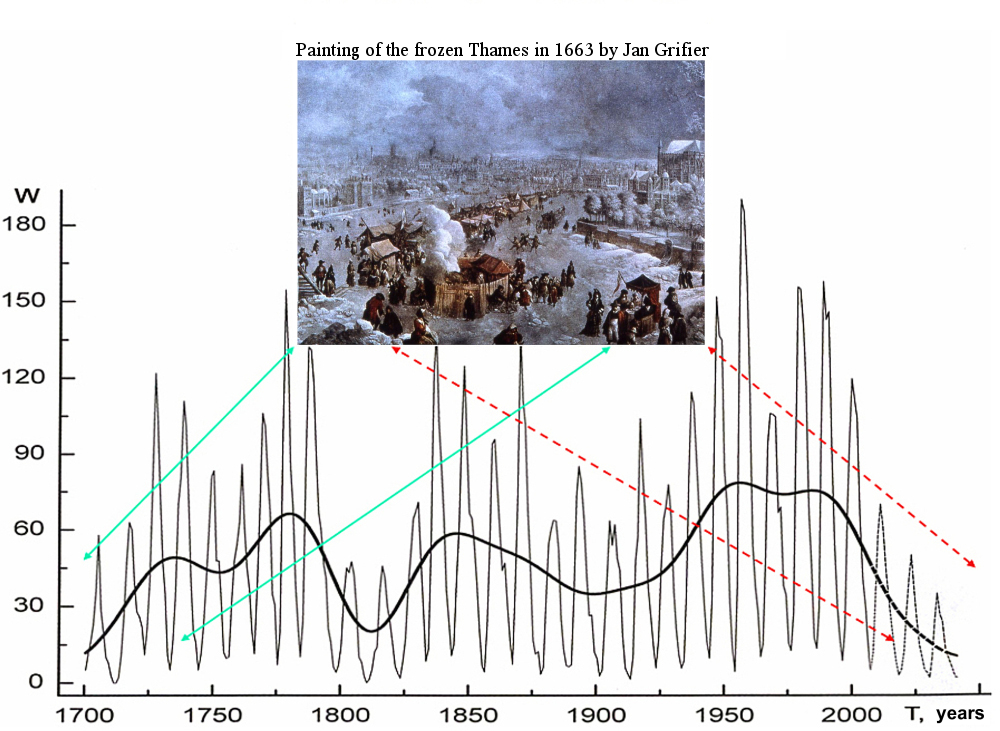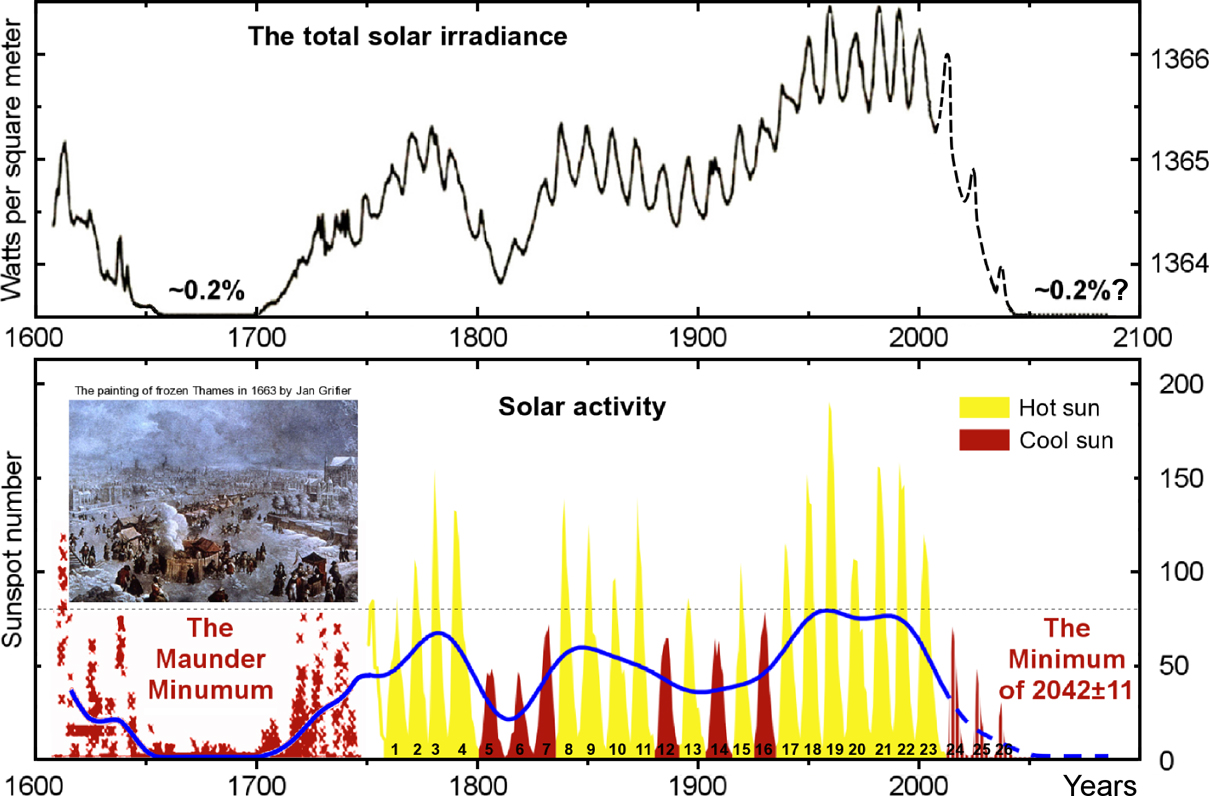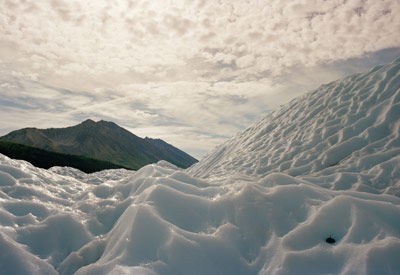In a study of cyclic behavior of the Sun, Russian scientists now predict 100 years of cooling.
These are not just any scientists. This forecast comes from astrophysicist Dr Habibullo Abdussamatov, head of the Russian segment of the International Space Station, and head of Space Research of the Sun Sector at the Pulkovo Observatory of the Russian Academy of Sciences.
The Russian scientists began by looking at a paper published by J. A. Eddy* in 1976 that documented the correlation between sunspot activity and corresponding large - and disruptive - climate changes on Earth. Disruptive because the changes frequently lead to economic and demographic crises that affected the existence of entire nations.
Conducting research similar to Eddy's, Russia's Eugene Borisenkov** discovered a quasi 200- year cycle of global cooling during the past 7,500 years that correlates to times of sunspot minima similar to the Maunder minimum. (These were also times when any industrial influence was non-existent, Abdussamatov points out. )

The 200-year variations in sunspot activity and total solar irradiance (TSI) are the dominating reason for climate change, says Abdussamatov. "In whole, the solar cycles are a key to our understanding of different cyclic variations in the nature and society."

"The study of physical processes on the Sun not only gives us an understanding of a large number of astrophysical questions, but also of the questions of geophysics, meteorology, biology and medicine. All energy sources used by humanity are linked to the Sun. The heat and light of the Sun ensured the development of life on the Earth, formed the deposits of coal, oil, gas etc."
"All life on the Earth and its future conditions directly and almost in whole depend on the total solar irradiance (TSI)."
See entire paper.
References:
* Eddy J. A. ,Science, 1976. 192, 1189
** Eugene Borisenkov, Climate Variations During the Last Millennium, Leningrad. 1988. p. 275)




Dr. Jack Eddy, for whom we now like to name the current Solar Minimum after, set about, like Edmund Maunder, to disprove the absence of sunspots from 1645 to 1720. It was believed at the time, that astronomers were not looking.
It is true that few were looking during the Dalton Minimum (early 1800's) Both Maunder and Eddy failed, and came away convinced that there was a drought of Sunspots during the Little Ice Age.
Pulkovo Observatory [Link]has done some advanced work in extending the Greenwich General System of measuring sunspots (as opposed to the Zurich system of counting them).
You can view the graphics of extended Solar Measurements by Pulkovo here:
[Link]
Note the times of the deep lows in the graph at the bottom of the page.
They correspond directly to the climate and agricultural crashes after the MWP.
The only question now is: How low will the next Grand Solar Minimum be and how long will it last?
Grasshoppers play priviledged gambling games with whole nations, while ants prepare.